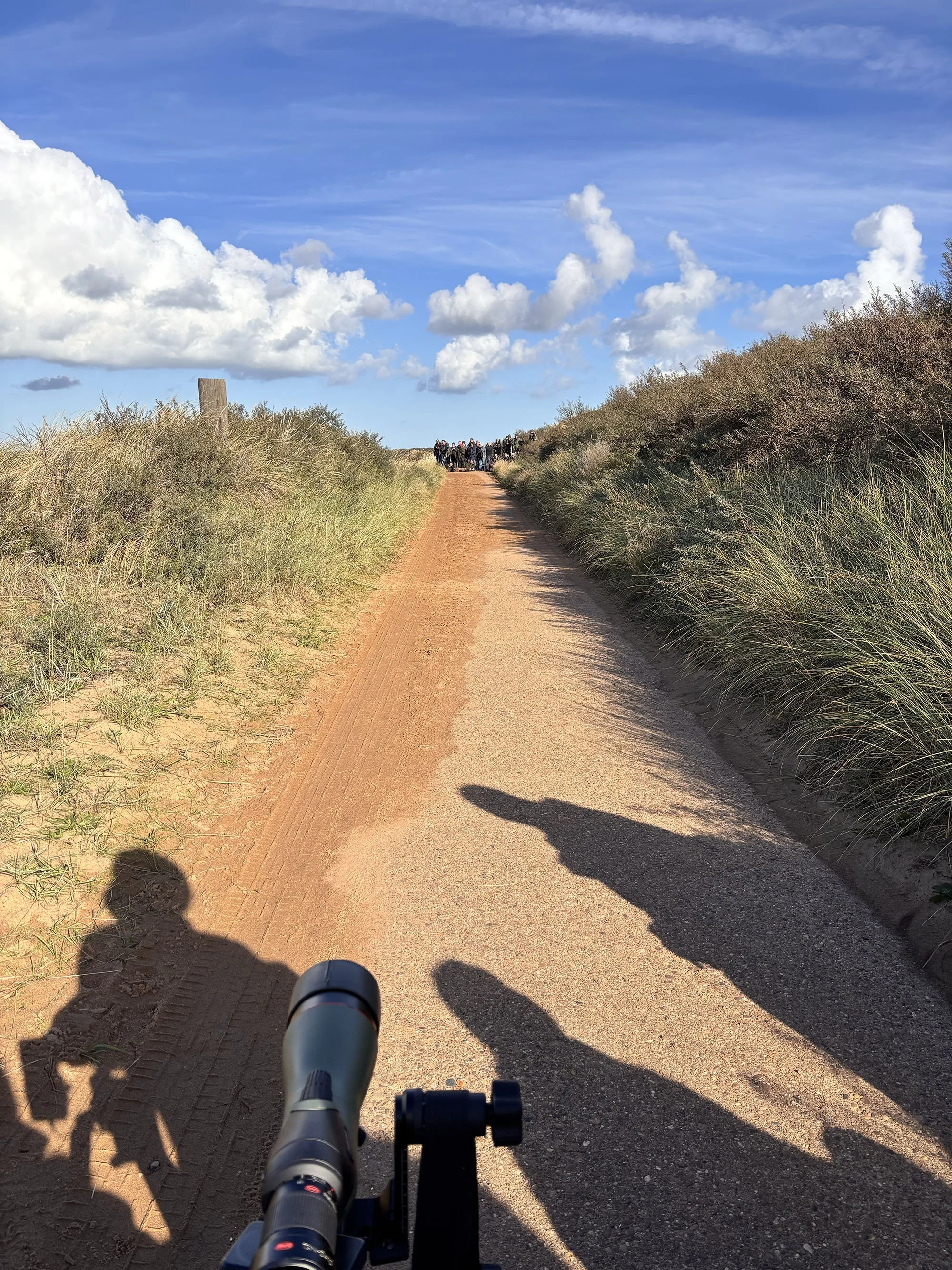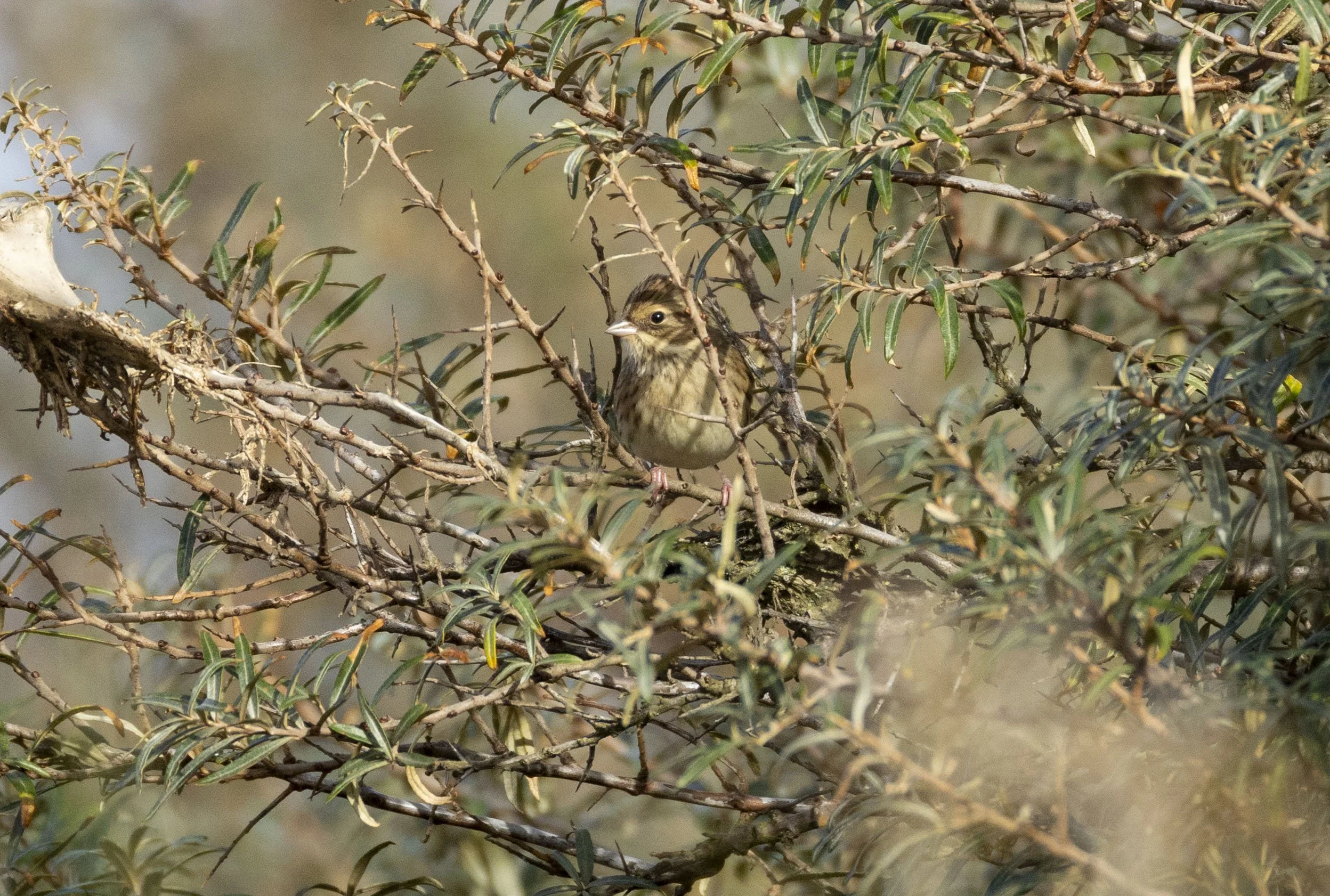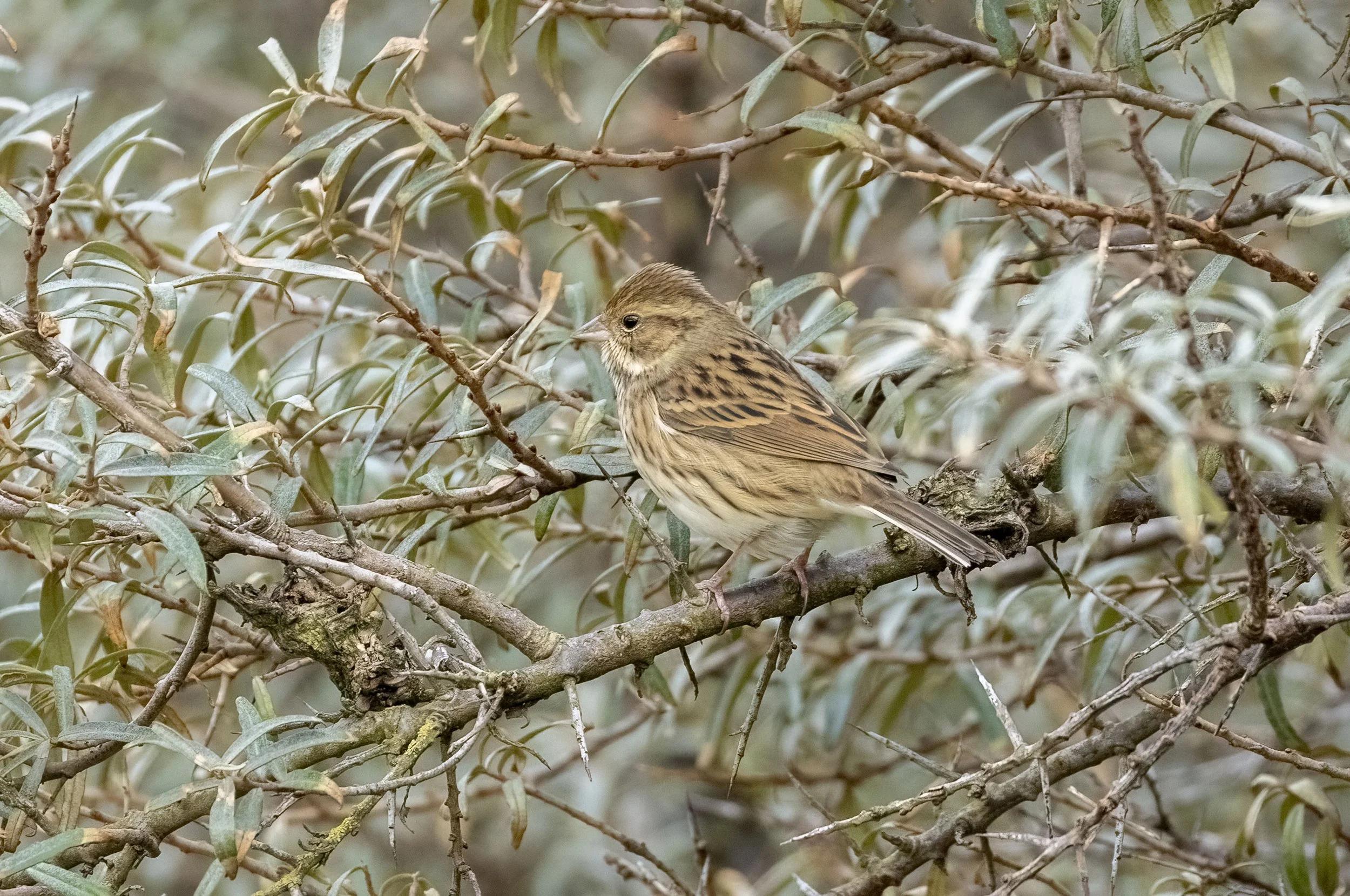Another October and another Black-faced Bunting - are they going to be the next Bluetail?
After last October’s Black-faced Bunting find in Lincolnshire https://www.grahamcatley.com/blog-1/october-25th-2024-the-last-chance-saloon this week a female / first-winter was found just across the Humber at Spurn Point, I put off going and on the 21st Chris and myself did another 9.5 miles Lincolnshire coastal slog. At least there were a few birds compared to the previous week but only thrushes, a few Goldcrests and Brambling plus Merlin and Peregrine enlivened the morning - a calling Yellow-browed Warbler at Ponderosa was out of limits thanks to the RAF and the planes producing a ridiculous amount of noise were ruining any chance of hearing anything different. Moving to Saltfleet in the afternoon we did at least get a brief view of another Yellow-browed Warbler but the dunes edges failed to produce any rare Wheatears, larks or Desert Warblers - a fairly typical Lincolnshire coastal foray. The 22nd dawned sunny and nice and there were clearly birds about on Waters’ Edge but news of the Black-faced Bunting’s continued presence set me off on the 36 mile trip to Spurn which went quite well.
Before the long sandy walk the news did not seem good as the bird had not been seen for over 90 minutes and on arrival at the spot I joined the crowds, surprisingly numerous after four days, and news was again not promising. A few very brief flight views and then it skulked for another 90 minutes. Here it was somewhere between us and them feeding in the marram and scrub on the left side of the road.
The passage of the odd vehicle was actually conducive to moving the bird around and producing more chance of it reappearing in view
Not the best of views
But after two hours it seemed like any shot in focus would be welcome
A real birder’s bird - suptle and elusive
Initial views were often hindered by sea buckthorn but at least the eye detection on the camera was beneficial
It occasionally raised its crown feathers when alert
and flight views were brief
Lighting and viewing angles change the appearance of the bird - it could easily be passed over as a Reed Bunting in a view like this
Or this
Or this
Backlit it is maybe even more subtle
When the AF on the camera has a little blip
As the crowds dissipated in the afternoon the bird became tamer and more predictable grovelling around feeding on the floor in the open at times though the light had gone
colours changed markedly with sun v cloud
A real seed muncher
Just before I left it perched in a low buckthorn for a minute or two and I got my best images - those on the ground look a bit dull - note the lateral crown stripes and grey nape - collar but the distinctly Dunnock like upperparts
Ceratinly not the most stunning rare bunting but educational
All images were with the Canon R6II and Canon RF 200-800 lens
A distinctly duller bird than the 2024 Lincolnshire individual which could mean that bird was a first-winter male?
underparts are arguably more distinctive than the upperparts




























